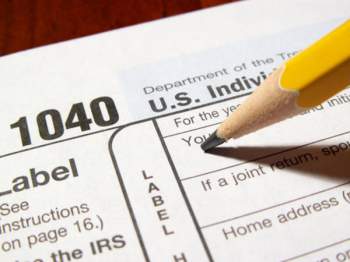
State and Local Government Revenue Stream

American states and local governments have imposed taxes on Americans since the independence of the United States in 1776. State and local governments have been concerned with maintaining an adequate revenue stream from taxation even before the ratification of the US Constitution in 1789. In fact, under the Articles of Confederation, states were enthralled with individual debt burdens that stemmed from the costs of winning the Revolutionary War.
The Articles of Confederation put to much power in the hands of states and states subsequently imposed high taxes and fees to pay off war debts to patriotic Americans, who sold war bonds, and the French, who fought the British in alliance with the colonial patriots. It was well understood that the state governments needed to establish solvency in order to expand and ward off future foreign usurpation.
This was a problem of national proportions but states were united enough to solve this threat to national and state interests. It was clear that the state of Massachusetts overtaxed the people, in 1786, when Daniel Shays launched a rebellion against the state of Massachusetts setting courthouses ablaze and fighting the Massachusetts state militia in a few skirmishes. The United States were in crisis and the weak states did not have adequate manpower to quell the insurrection.
It was clear that a better government needed to be established that would be fairer to the taxpayer yet have the power to ensure the primacy of the rule of law. The Federal government established the Constitution in 1789 and immediately ratified the Bill of Rights in response to the potential of an over centralized and despotic government. The modern system of check and balances was established and the relationship between state and federal governments were established.
The rest of this story is usually told in history classes with a focus on the federal government. However, the continuation of the narrative of the initial conflict between the state government and Shays is often a neglected topic of history. Since 1789, state governments have tried to make taxation as pain free as possible to avert another episode similar to that of Daniel Shays. Americans generally do not mind paying state government taxes because the results of state tax money is more visible to residents of a given state.
States have also derived systems of taxation based on economic and political theory. In addition economic and political theories, the basics of maintaining a state and local governments revenue stream are based on economic classifications. These economic classifications are primarily based on concepts familiar in the study of economics. Given that economics is a social science, some of these economic classifications have a political twinge to them. Some classifications of state and local government revenue have more of a political influence than others that derived from pure economic stock.
Politically Derived Revenue Raising Mechanisms
The distribution of the tax burden is one of the primary political and economic concerns of a state government. Distributing the tax burden can ease the political opposition of taxation. The income tax was first adopted in the United States in 1913 with the ratification of the Sixteenth Amendment to the federal Constitution. It constitutionally sanctioned the adoption of the income taxes for states as well. Some states have chosen not to impose their own income tax. The ones that have chosen to adopt an income tax have helped ease political opposition to income taxes by either making the income tax progressive or regressive.
Revenue streams from a progressive income tax system gain the bulk of their revenue from the rich. This is based on the assumption that the government can help the economy move along with government programs to stimulate a state economy while maintaining the solvency of the state government. States that adopt a regressive income tax policy, on the other hand, gain the bulk of their flow of revenue from the middle and lower classes.
The philosophy behind a regressive income tax system is to empower the rich so they can expand the economic fortune of a state's economy. The choice between a progressive tax or a regressive tax, primarily, is a matter of political philosophy. Not matter the distribution of tax burden in a given fiscal year, a state government is going to get what it needs to serve the public with its vital governmental services.
Economically Derived Revenue Raising Mechanisms
The types of taxes that are imposed on residents of state and local governments are derived by information on the economic nature of a good or service to be taxed. For the most parts the reasons why one item is taxed over another is a matter of the basic economic laws of supply and demand. Sales taxes are chosen based on a commodity's elasticity or inelasticity.
Elasticity, in economics, refers to a commodity's price being subject to market fluctuations in demand such that consumer behavior is significantly influence by the price of a given commodity. Inelasticity, in economics, relates to a commodity with both an high demand and a supply high enough such that slight fluctuations in the market do not influence the consumption of a given commodity. Many economic concepts can apply to these interrelated concepts.
In taxation, elastic taxes include the income tax and sales taxes on elastic commodities. A state's demand for revenue is also considered an elastic demand as it changes dramatically every fiscal year. States must raise revenue to meet this demand by choosing a combination of elastic and inelastic taxes.
Inelastic taxes generally include property taxes, by which many state, counties, and cities fund their public schools, and sales taxes on inelastic commodities like food or clothing. Many Inelastic commodities are generally considered necessities of life; thus, lawmakers are selective of which inelastic commodities from which to extract revenue.
In addition to being taxes' ability to applied to the economic concepts of elasticity and its opposite, the business cycle also has influence over a state's revenue stream. State and local governments' fiscal policies and strategies are based on the current stage in which the business cycle. There are three schools of thought when lawmakers make policies to gain revenue without committing political suicide.
Cyclical fiscal policy in the non-interventionist approach to taxation. Cyclical policy does either one of two things: swims with the current or allows the current to carry the economy to whatever stage of the business cycle it may go. Countercyclical fiscal policy is the reactionary form of taxation. A government with a countercyclical fiscal policy does whatever it can to influence current economic trends to steer the economy in the direction it sees fit.
To continue the comparison to swimming, countercyclical fiscal policy swims against the current of the economic river. Non-cyclical taxation, refers to changes in taxation that are not influenced by the short-term business cycle, but influenced by long term economic trends like monetary inflation or deflation. State and local governments are impotent against inflation or deflation. Therefore, non-clyclical taxation is beyond the responsibility of local and state governments.
NEXT: An Overview to Government Revenue Stream




















